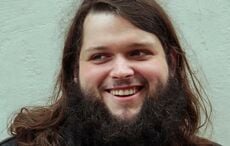Outside of Philadelphia, historians and archeologists are uncovering more artifacts from Irish immigrants who died while working on the Philadelphia railways lines. Historian Dr. Frank Watson explained how the recent findings at Duffy’s Cut may lead to the uncovering of the history of Irish immigrant workers in America
In 1832, Irish men left their country to find work in the thriving United States of America. Men boarded the John Stamp passenger ship headed for Philadelphia, Penn. These men came from all over Ireland, including counties Derry, Tyrone and Donegal. 57 Irish workers were sent to build the railways for the new Philadelphia and Columbia Railroad. However, an outbreak of cholera resulted in the death of all the Irish workers. Though the workers were on record with state employment, the men who traveled so far from home we never given a proper burial. By the 1900s, construction larger railways began and the Philadelphia and Columbia Railroad line was abandoned.
177 years later, a research and archeological team from Immaculata University have begun to find the remnants of the shanty site where the Irish immigrants were buried. Dr. Frank Watson, along with his brother Dr. Bill Watson and their team of archeologists and historians have made astonishing discoveries at Duffy’s Cut, the now historical Irish immigrant landmark in Malvern, Penn.
In March 2009, the team found the first bodily remains. Using the railroad workers registration file and forensic testing, the team identified Donegal native, John Ruddy. The skull that the Duffy’s Cut team found was intact and led to a very important discovery. “John Ruddy was missing a top front molar. The missing tooth turned to to be caused by a genetic defect, which people, presumably from the Donegal area, can have today,” Watson said.
Early this July, the remains of two men were found and have given Watson and his team more evidence of the mass Irish immigrant grave. “We found a second and third man buried, with intact skulls and upper leg bones. This is an amazing find,” Watson said. Along with the bodies, the dig team has also uncovered a number of artifacts. “More importantly, we’ve found the remains of the three bodies, with traces of clothing and buckles from belts” Watson added. Certain markings and designs of the accessories can help identify the men with their home county, which can make matching a man to his body easier.
The discovery of the two buried bodies also helps reveal the conditions which the Irish immigrant workers were treated. “The men were buried hastily. Their bodies weren’t treated with respect” Watson said. When uncovered, it was observed that one man was buried in the traditional way, “his head pointing to the west and the feet towards the east,” Watson said. But the other body was found the opposite way, leading Watson to believe that the disease-ridden body was dumped with others into a mass grave. To avoid severe Cholera outbreaks, people infected or thought to be infected were killed and disposed of as quickly as possible.
It has been worth the wait for the Duffy’s Cut archeological team. “We started in 2002 with looking at archival state and federal records of the immigrant rail workers,” Watson said. With help from geophysicist Dr. Timothy Bechtel, Watson and his team were able to survey the West Philadelphia suburb, to find the exact spot where the railroad site was built. “This land was undistrubed for 177 years, we were lucky that once we found the exact spot, all the remains were still there,” Watson said. The site has gain fame for their discoveries and efforts to identify the immigrant workers. Irish ambassador to the U.S., Michael Collins visited Duffy’s Cut to learn about the project.
Duffy’s Cut archeological dig site is about an acre. In the next weeks, Watson and his team will continue the search for bodies and remnants. “We’ll start ripping apart the hillside,” Watson said. Archeologist and University of Maryland professor Stephen Brighton is the team’s expert on the proper identification and extraction of any and all artifacts found. On the teams goal for the rest of the dig, Watson said, “we hope to find every piece of these men’s history, recover it and return them home.”




Comments